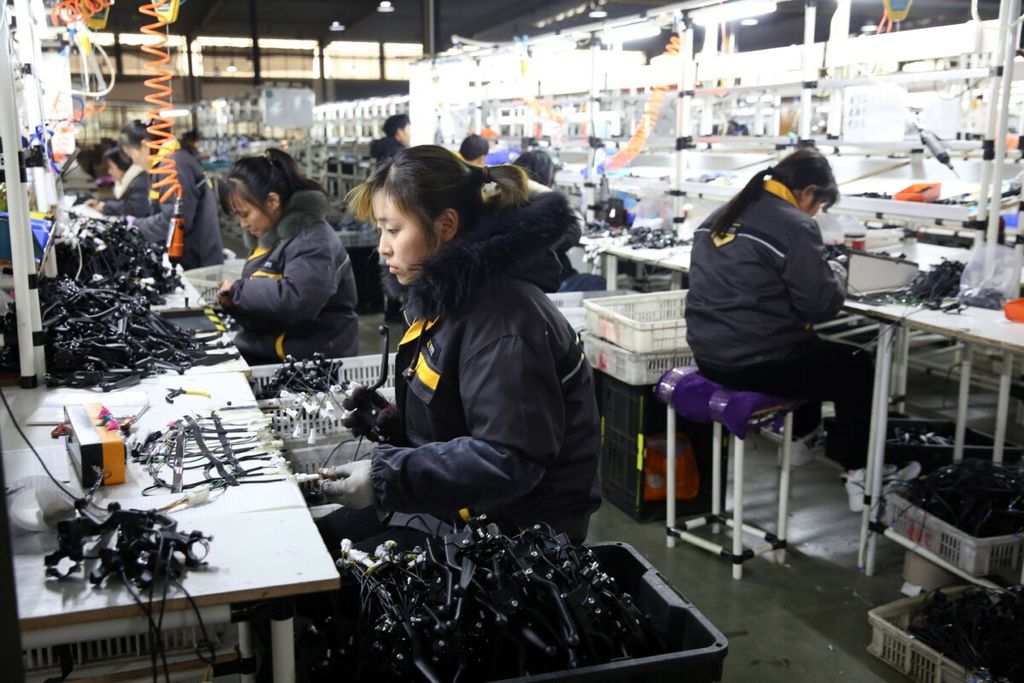China Manufacturing PMI May 2025 Signals Economic Pressures and Demand Challenges
China's manufacturing sector continued to falter in May 2025, with the latest Purchasing Managers' Index (PMI) data revealing a contraction for the second consecutive month. The slowdown, influenced by weak domestic demand and increasing global trade pressures, paints a concerning picture not only for the world’s second-largest economy but also for global supply chains.
Persistent Contraction Despite Slight Improvement
According to the National Bureau of Statistics, the official China manufacturing PMI for May 2025 stood at 49.5, a marginal increase from April’s 49.0 but still below the crucial 50-point threshold that separates expansion from contraction. Meanwhile, the Caixin/S&P Global manufacturing PMI—often viewed as more reflective of smaller, export-driven private firms—dropped significantly to 48.3, down from 50.4 in April. This was the lowest reading in nearly 20 months and the first contraction in the Caixin index since late 2023.
The persistent underperformance suggests that the rebound many expected post-COVID and after supply chain normalization remains elusive. Instead, China’s industrial sector faces a fresh wave of uncertainty driven by both internal and external dynamics.
Weak Domestic Demand Dampens Recovery
One of the major contributors to the PMI contraction is China’s sluggish domestic demand. While the government has implemented various stimulus measures to encourage household spending—such as interest rate cuts, real estate easing, and tax incentives—the recovery in consumer sentiment has been tepid at best.
Retail consumption, particularly in the mid-to-lower income segments, has remained subdued. This has had a direct impact on factory orders, especially in sectors like electronics, appliances, and textiles, where domestic buyers form a large share of the market. In fact, the new orders sub-index in the official PMI came in at 49.8, still in contraction territory.
Businesses are responding with caution. Inventory levels remain high, and many producers are hesitant to increase output without clear signs of market improvement. The result is a sluggish pace of industrial activity across the country, as manufacturers struggle to maintain margins and manage capacity.
External Pressures and Renewed Trade Tensions
In addition to domestic struggles, Chinese manufacturers are facing renewed challenges on the international front. In recent months, geopolitical tensions—particularly with the United States—have reignited concerns over trade barriers and tariffs.
Washington’s reintroduction of selective tariffs on certain Chinese goods in early 2025, ostensibly for national security reasons, has already impacted sectors like semiconductors, electric vehicle components, and advanced machinery. As a result, the export orders sub-index has declined sharply.
Moreover, the European Union’s stricter trade enforcement on Chinese clean-tech imports, citing market distortion and unfair subsidies, has further limited China’s outbound manufacturing flows. This has created a bottleneck for exporters, particularly in high-growth sectors like solar panels and battery cells.
Sectoral Breakdown: Where Is the Pain Felt Most?
Automotive and Electronics Hit Hard
The Chinese automotive industry, especially the electric vehicle (EV) segment, has been particularly affected by both domestic oversupply and rising foreign protectionism. Price wars among top EV makers like BYD, NIO, and Geely have slashed profit margins. Factory utilization rates have dipped, leading to temporary shutdowns in key provinces like Guangdong and Zhejiang.
Meanwhile, electronics manufacturing is also facing significant contraction. Smartphone and laptop component orders have dipped, reflecting both global inflation and saturation in key export markets like the U.S., India, and Southeast Asia.
Textiles and Apparel Hold Steady
Interestingly, sectors like textiles and apparel have shown relative resilience. Thanks to increasing demand from developing markets in Africa and South Asia, some manufacturers have managed to offset Western demand dips. However, even these gains are modest and not enough to counter the broader industrial weakness.
Government's Balancing Act
The Chinese government now faces the difficult task of stimulating economic activity without exacerbating financial instability, especially in its highly leveraged property and local government sectors.
Premier Li Qiang has reaffirmed Beijing’s focus on quality growth, innovation, and upgrading the industrial supply chain. Targeted incentives for advanced manufacturing, tax credits for R&D, and subsidies for smart factories are being proposed. But these long-term strategies may not provide the immediate boost required to reverse the short-term trend of contracting output.
Monetary easing remains a key tool, and many economists expect the People’s Bank of China (PBoC) to cut interest rates further in Q3 2025. However, questions remain about the effectiveness of these measures given that business sentiment, rather than capital availability, seems to be the larger bottleneck.
Implications for Global Markets
As China remains a critical node in the global manufacturing network, its slowdown has broad ramifications. International buyers may face longer lead times or turn to alternative suppliers in Vietnam, India, or Mexico. Commodity exporters—from copper and nickel producers in Indonesia to oil suppliers in the Middle East—could see demand fluctuations based on China’s factory activity.
Moreover, financial markets are already reacting. The yuan has weakened against the U.S. dollar in recent weeks, reflecting investor concerns over China's growth trajectory. Global indices, particularly those weighted with industrial and logistics firms, have also shown volatility on PMI news days.
Outlook: Can China Reverse the Trend?
Looking ahead, analysts are divided on whether China can avoid a prolonged industrial downturn. Some believe that sustained policy support, combined with easing trade tensions and improving household confidence, could lift PMI readings above 50 by late 2025. Others argue that structural issues, like overcapacity, demographic challenges, and shifting global supply chains—will keep growth constrained.
Ultimately, the trajectory of China’s manufacturing sector will depend on both external developments and internal reform momentum. For now, the contraction in the China manufacturing PMI May 2025 serves as a cautionary signal that the path to sustained recovery is anything but straightforward.
Read More






 Friday, 21-11-25
Friday, 21-11-25







